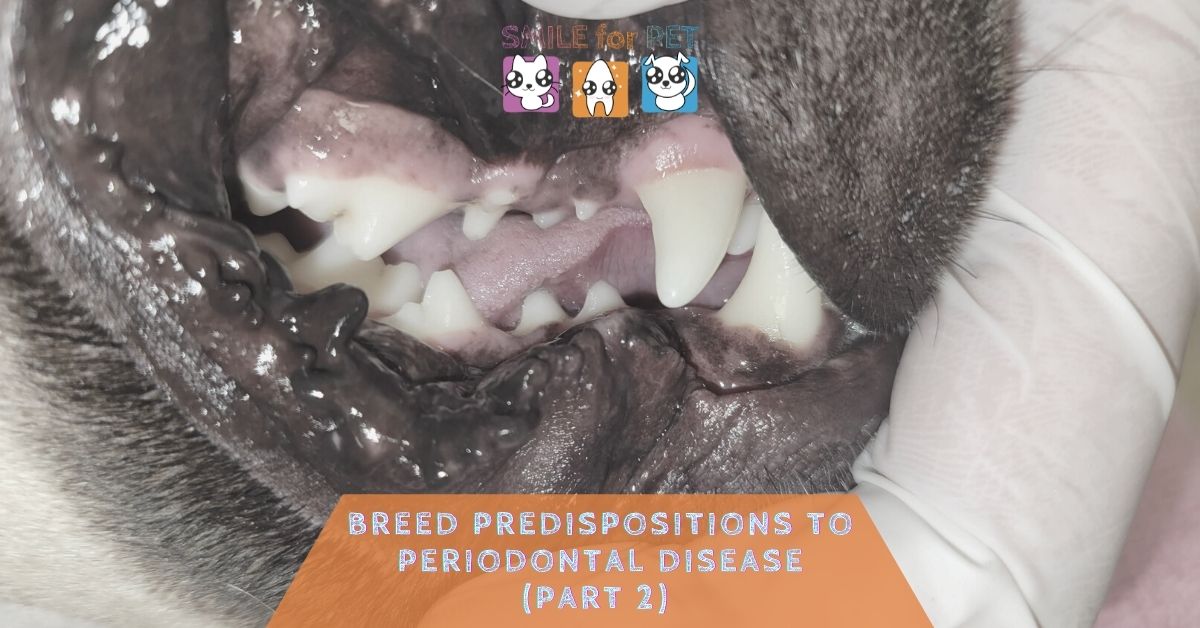Periodontology (part 2)
Periodontal disease occurs in all dog breeds. Some breeds have more predispositions to periodontal disease than others. Giant dog breeds with traditional skull structures very rarely suffer from these diseases.
More offer periodontal disease might occur with:
- Brachycephalic dogs
- cocker spaniels
- toy breeds
- dwarf dogs
Most common patients that has has predispositions to periodontal disease:
Dwarf breed dogs are the most common patients at the vet dentist’s office. Plaque that builds upon the teeth is not correctly “brushed off” and quickly mineralizes into tartar in these breeds. Usually, dwarf breeds are good candidates for anesthesia-free teeth cleaning. But it better start when the dog is still young.
Dwarf breed:
- Pembroke Welsh Corgi
- Dachshund
- Pug
- Cardigan Welsh Corgi
- English Bulldog
- French Bulldog
- Basset Hound
- Dandie Dinmont Terrier
- Skye Terrier
- Scottish Terrier
Why do small breeds develop tartar quicker?
- Small breeds have large teeth about the size of their jaws.
- The distance between teeth is smaller than in “normal” sized dogs.
- Lack of chewing (reluctance of the dog to chew)
- Frequent eating. Often in small dog breeds, food is in the bowl all day, and the dog eats a little at a time all day long
- Much more wet, soft food
- Viscous saliva promotes the rapid formation of plaque, which is not washed away
- Dwarf dog saliva has a different mineral composition than the more giant breeds. They have a faster process of plaque mineralization.
What an owner should see to suspect his dog has predispositions to periodontal disease:
- When there is an inflammatory reaction, there is an unpleasant odor – the growth of pathogenic bacteria.
- You may not notice plaque immediately, but if you run a gauze swab or toothbrush over your teeth, you will see it as a yellowish mass.
- Tartar can be anywhere from a light yellow to a grayish-green or even brown. Tartar can be so significant that the tooth tissue is not even visible because of the large mass. Sometimes tartar forms “bridges” when several teeth are encased in a large conglomerate.
- Bleeding gums.
- The animal may lose its appetite, sometimes refuse to eat at all, and can chew only on one side. The dog takes food in his mouth and immediately throws it, sometimes shrieking. Such eating disorders should lead the owner to believe that the dog’s mouth is not in order.
- Pathological mobility of the teeth. Owners often notice this when a tooth has almost fallen out and is hanging out on a piece of gum while somehow not naturally sticking out at the side.
- On the lips and muzzle, the fur may be stained in the corners of the mouth. It may be an exudate (most often purulent) secreted under the gum. If you press on such gum – pus comes out of it.
- Spontaneous fracture of the lower jaw. This happens when you notice something wrong when the jaw has already broken. This occurs because the resorption causes the lower jawbones to be too thin to several millimeters, falling apart at the slightest pressure.
- Asymmetry of the muzzle. An abscess is a swelling in the diseased tooth area. The spot often opens with a fistula in the suborbital space.

